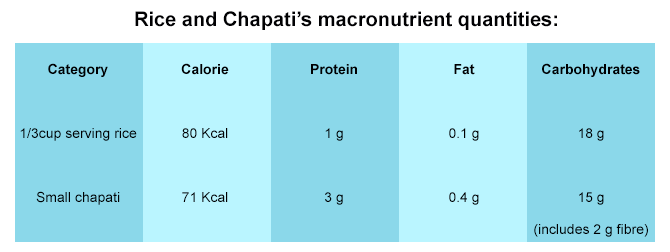No Indian meal is complete without rice or roti/chapati or both. These staple elements of Indian cuisine are either a part of our breakfast, lunch, dinner or all three.
Of late, the growing fitness fad has raised questions on the nutritional value of all the edibles, including rice and chapati.
Let’s dissect the pros and cons to make your life choices easier.
Both these food items have similar carbohydrate levels and calorific value, but different nutritional value — chapati contains more proteins and fibre than rice.
Rice is easier to digest because of its starch content, whereas chapati digests slowly.
However, due to slow digestion chapati keeps you full for longer, which is a big plus for weight watchers.
Vitamins
Both rice and chapati provide folate, a water-soluble B-vitamin.
However, rice is a better source of Folate than chapati.
Minerals
Each serving of chapati provides you with calcium, phosphorus, iron and potassium.
On the other hand, rice provides the same amount of iron but less phosphorus, potassium and magnesium.
Rice doesn’t contain any calcium.
Verdict
Chapatis contain more fibre, protein, micronutrients and sodium.
Rice doesn’t contain any sodium. If you are watching your sodium intake, then rice will be a better option.
Whole wheat and multi-grain chapatis are the most preferred variants, and brown rice is liked better.
Both wheat and rice have a similar Glycemic index, which means that they raise the blood sugar level to the same extent.
As long as you restrict the quantity, it does not matter what you eat.
If two portions of cereals — one chapati and one small bowl of rice — are consumed, it is definitely alright.
So, don’t just avoid rice, simply watch the portion size.




Leave a reply